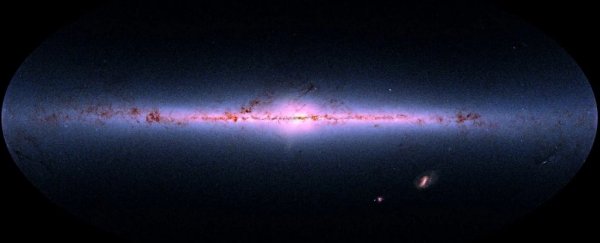The Fermi paradox describes the apparent contradiction between why there's no evidence of extraterrestrial life, despite the fact that logically, it should have been discovered by now.
Named after Nobel Prize-winning nuclear physicist Enrico Fermi, who was sometimes known as the "architect of the atomic bomb", the paradox is based on a lunchtime conversation between the famous scientist and several colleagues at the Los Alamos National Lab in 1950, following a cartoon in The New Yorker that commented on a spate of UFO reports.
Fermi is said to have performed a few back-of-the-envelope calculations to estimate the prevalence of human-like technology in the Universe. Based on his rough figures, he argued Earth should have been visited by aliens by now.
"Where are they?" he is said to have remarked.
The Drake Equation
Similar to Fermi's estimate is a more detailed equation set out in 1961 by American astronomer Frank Drake, written to provoke conversation at an inaugural meeting on the Search for Extraterrestrial Intelligence (SETI).
The equation suggests the number of civilizations close enough for us to have heard from can be based on a combination of statistics.
These include the number of life-supporting planets and the chances life might develop both the ability and desire to transmit information that can cover vast distances in a reasonable amount of time.
In the half-century since the Fermi paradox was first suggested, we have learned a lot about the diversity of exoplanets and their stars. Yet we're still a long way from being able to make remotely accurate judgements on the development of life on worlds other than Earth.
Where are all the aliens?
Today, there are numerous potential 'solutions' to the Fermi paradox, including explanations like:
-
We're overestimating the prevalence of intelligent life in the Universe
-
We're overestimating the desire of any single life form to willingly transmit information
-
The information is there, we're just not seeing it or understanding it
-
The information was there, and might be there again, but humans haven't been listening long enough to detect it
-
Humans are the first to arrive at the interstellar stage and we're too early to detect other civilizations.
All Explainers are determined by fact checkers to be correct and relevant at the time of publishing. Text and images may be altered, removed, or added to as an editorial decision to keep information current.
